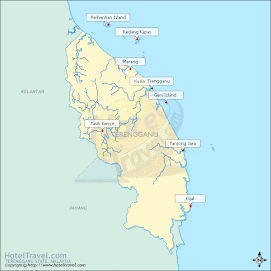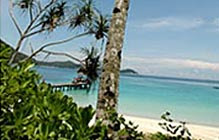ABU GARCIA CARDINAL 300

This is the reel that was responsible to hook me up onto fishing. Received it as a gift, like it, love it and has been with me in most of my fishing occassion. There are a lot of likeable features on this reel. Abu Garcia had built this reel with a lot of thought and plant with a lot of emotion element onto the design. Here is what I meant:
1. The spool is made from aluminum and have 'drill' hole around it, whichmake it light.
2. Abu is giving 7 ball bearing for undeniably smoothness for its size.
3. Wooden handle design, which give it class and attitude
4. Spare spool were not forgoten.
5. Reasonably priced.I tend to be much more optimistic when talking about this reel. Bare in mind, this is my first reel ever.
There are minor dissatisfaction, but it does not bother me at all.
1. Abu no longer giving embossed plate for the brand mark.
2. The golden color chip-off after some time.
Despite it small size, I had it spooled with 20 lb braided Power Pro line. It is a bit too much for its ability, but I just like to have it because I often visited paid pond with this reel. I even took it on boat fishing and match it with light duty rod. Do not be mistaken, this reel's resume was quite ok, there were a lot of barramundi from 2lb to 7lb, 7lb carps and lots and lots of shore fish.
SHIMANO SYMETRE

The newly redesigned Symetre require a lot of effort from Shimano. The reel is built on a solid, lightweight aluminum frame that keeps the stress of fighting big fish, the effects of heat and cold, and years of hard use from moving of any of the interior components, so every gear, bearing, and shaft is where it's supposed to be. The new Cold Forged aluminum spool to reduce weight and provide more strength and resistance to nicks and scratches that can make the rim rough and drastically reduce the distance of your cast. You'll find all the other great features you expect from the industry leading Shimano reels, too, include Super Stopper II for instant anti-reverse, Fluid Drive II and Dyna Balance for smooth, wobble free operation, and Power Roller for reduced line twist and smoother operation. Symetre also offers the S-Arm cam, which keeps your line from wrapping on the bail, which can be a problem with other spinning reels. Symetre also features Super Slow Oscillation, which lays the line on the spool in an almost parallel pattern, which reduces friction when the line comes off the spool on the cast and eliminates spaces and gaps which can cause your line to ‘dig in' and stick on the cast. Symetre offers a fast 6.0:1 gear ratio for the 1500 and 2500 sizes and 5.7:1 for the 4000.
 swam
swam

 Kelah Cyprininae, Tor tambroides. Also known as the Malaysian Mahseer.
Kelah Cyprininae, Tor tambroides. Also known as the Malaysian Mahseer.  This is the reel that was responsible to hook me up onto fishing. Received it as a gift, like it, love it and has been with me in most of my fishing occassion. There are a lot of likeable features on this reel. Abu Garcia had built this reel with a lot of thought and plant with a lot of emotion element onto the design. Here is what I meant:
This is the reel that was responsible to hook me up onto fishing. Received it as a gift, like it, love it and has been with me in most of my fishing occassion. There are a lot of likeable features on this reel. Abu Garcia had built this reel with a lot of thought and plant with a lot of emotion element onto the design. Here is what I meant:
 KELAH
KELAH



 KENYIR LAKE
KENYIR LAKE SECTOR OVERVIEW
SECTOR OVERVIEW





